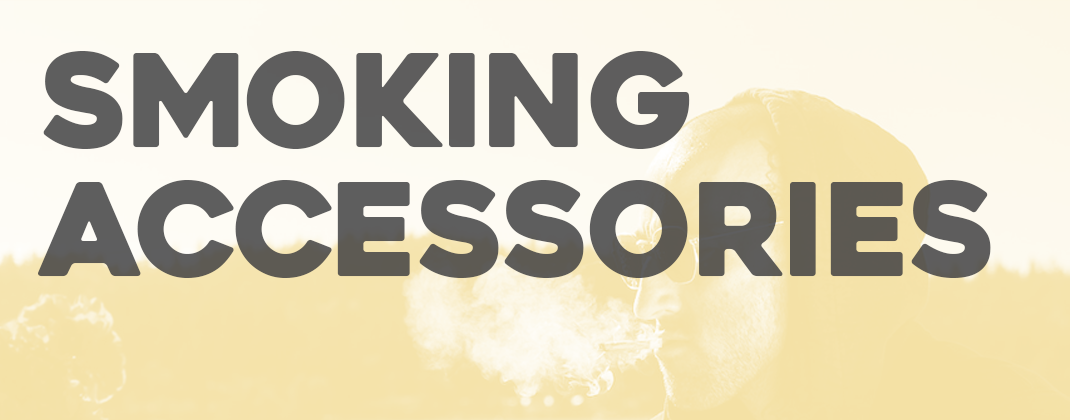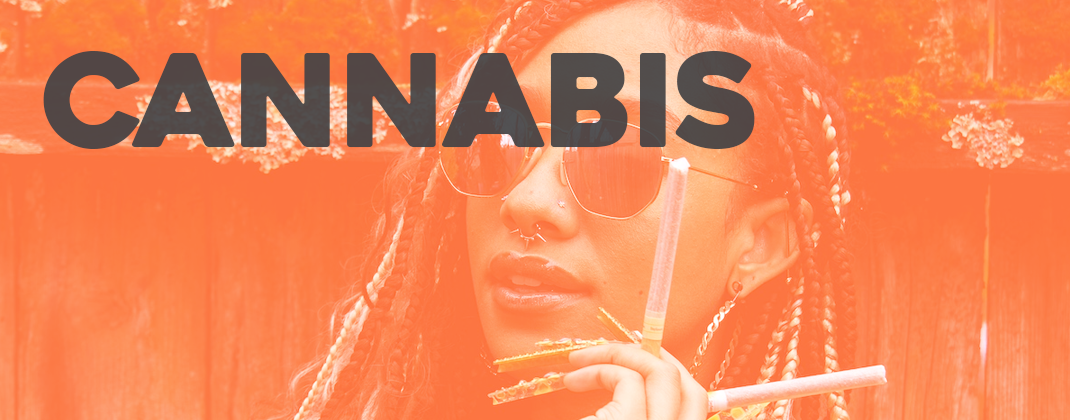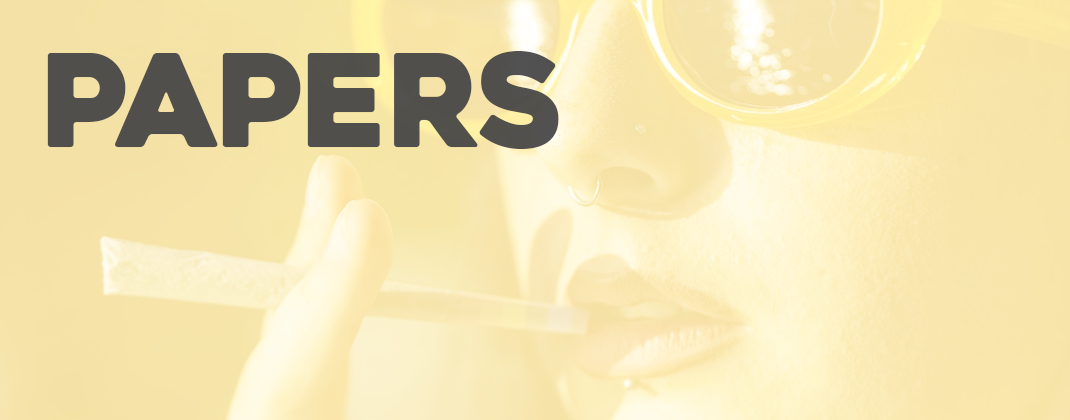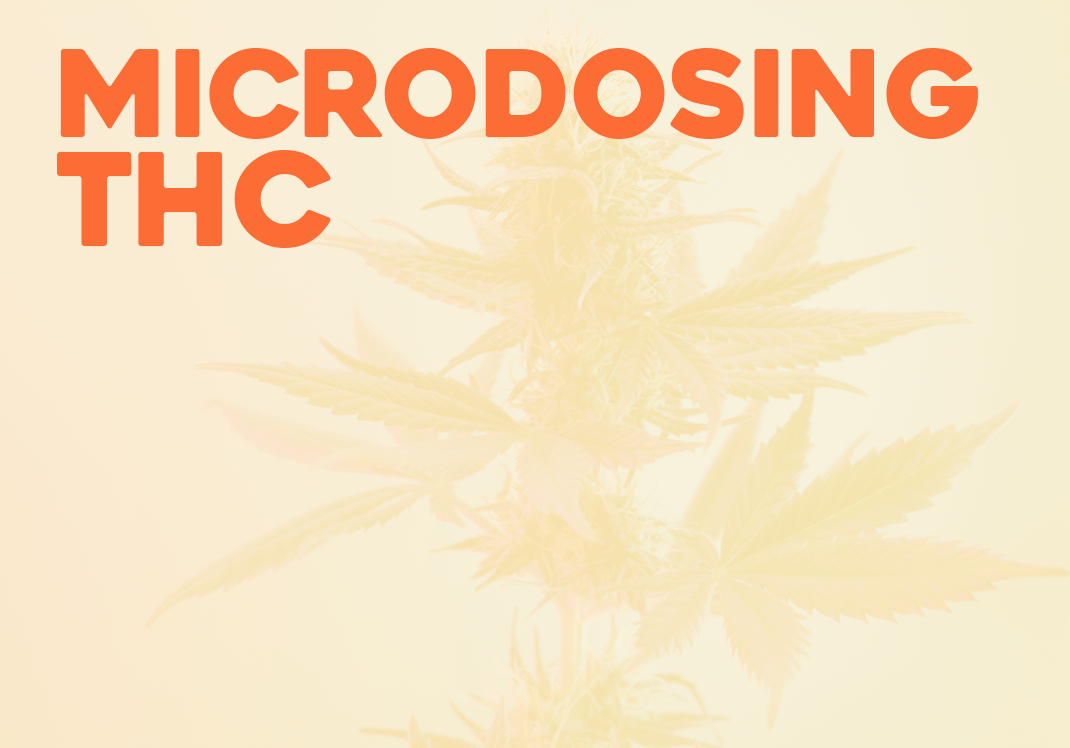Why and How to Microdose THC
Posted by DaySavers Team on Aug 15th 2025
For a lot of us, the goal is to simply get as high possible. We buy the weed with the highest THC, pack a bunch into a pre-roll and launch ourselves into the dreamy stratosphere.
Sometimes it’s just to enhance our experience and Enjoy Our Day a bit more, but sometimes it’s about pain relief or reducing anxiety or even just trying to improve a little focus.

And if that’s the case, the traditional “more is more” approach may not be exactly what you’re looking for since getting high often means the brain meats get a little lagged and mushy as well. Say hit to Towelie everyone!
Sometimes, in fact, less can be more. It’s called “microdosing” and it can be a great way to get some of the benefits of THC and other cannabinoids without bringing on the brain fog or haze that we often associate with the “high.”
And look, I'm not slagging the brain fog. It’s why many of us are here.
But if your goal is to achieve the therapeutic benefits of a pre roll without the psychoactive effects or impairment, the strap in and let’s get small.
What is Microdosing THC?
Much like it sounds, microdosing THC simply means taking a smaller amount of THC in than usual.
So what is a normal amount of THC and what constitutes a microdose of THC?
Let’s start with a “normal” dose.
For labeling purposes, industry standard (and, in fact, mandated by law in many states, especially medical markets) for a single “dose” of THC is 10mg. This mostly applies to edibles, where these things can be more controlled and more evenly dispersed through the product.
Odds are, no matter how big your edible is (and there are some MONSTERS out there), it is broken down somewhere to a number of 10mg doses.
So if 10mg is a normal dose, what is a microdose of THC?
A microdose of THC is considered to be about 1-2.5 mg and no more than 5 mg.
So let’s say you grab some of your favorite flower and your favorite DaySavers king size pre-rolled cone or tube with your favorite premium filter tip (for me right now, this is the Fill-a Blunt King Size Pre-Rolled Blunt Tube with Ceramic Filter Tips with Ceramicool™ technology) and pack up a full gram for a session.
Now, for simplicity’s sake, we’re going to say your flower has a potency of 20%, which is about average, according to industry observers. In fact, a recent University of Colorado report, published in Scientific Reports, found that (despite what it may be labeled) the average potency of the 178 flower samples tested from Colorado was 20.8%.
fpreBut I wasn’t a math major so I’m just going to round down to 20% to make this easier (though the math works for whatever potency you plug in).
So there are 1,000 milligrams in 1 gram. So we multiply 1,000 mg by 20% (or 0.20; if you’re playing along at home just slide the decimal point over on whatever your potency number is) to find that there are about 200 mgs of THC in your fully-packed pre-roll.
Next we need to estimate how many hits or puffs you can get out of typical joint. Again, we’ll estimate but the math works out with whatever your number is. We’re going to say a typical 1 gram king size pre-roll has about 10-15 hits in it. Now divide:
But here’s where it gets a bit tricky. Studies have shown that you don’t actually get all that THC. In fact, the “bioavailability” of a joint, or the percentage of THC actually absorbed using that method, is about 30%. So now we multiply:
So using this math, we’re going to say a good rule of thumb is that each puff off a pre-roll should deliver about 5 mg of THC per hit, depending on the size of your hits.
But again, your mileage may vary.
Does Microdosing THC Get You High
The simple answer is no, or that’s the goal at least. And that’s why the upper limit for a “microdose” is 5 mg, since that is usually where you can start to feel the effects kick in.
Basically, if you can feel the high, you’ve taken too much. That’s not a microdose, it’s just a small dose.
What Are the Benefits of Microdosing Cannabis?
So now that we know what a microdose is, why would we do it?
Well the idea is to deliver some of the medical benefits of THC (or the other cannabinoids) but without the psychoactive effects of a bigger hit. So what it is good for?

For many people, microdosing THC can reduce stress and anxiety by loosening you up a bit and helping you relax without the euphoric effects of a high or the paranoia that can come with it for some.
For others, microdosing weed can help manage chronic or neuropathic pain, again without the high and also, according to some studies, without the tolerance buildup that comes with a full dose.
Many people use cannabis to help them sleep, but too much can keep them awake. A microdose of THC – or CBD or CBN – can help you quiet your brain and relax your body to help bring on sleep without the groggy, out-of-it feeling that comes with higher does or pills.
On the other side of the coin, other people use a microdose of cannabis to help improve focus or cognition without worrying about the fuzziness or impaired thinking of a full-on high.
Microdosing THC also can help with social engagement or creativity by helping to reduce anxiety and lighten the mood while not bringing on a full high. Some artists and professionals have even said that microdosing THC helps them think outside the box and brainstorm new ideas by freeing them of their internal critics doubt.
There are even some studies that show microdosing THC can help with brain health. One study published in the American Journal of Endocannabinoid Medicine found that microdosing THC might have some neuroprotective effects. Another study published in the Journal of Medical Case Reports even found that microdosing THC is an effective treatment for Alzheimer's patients.
Microdosing THC also seems to avoid a tolerance buildup in general, as well as side effects, making it better for helping treat certain medical conditions than higher doses.
How Does Microdosing THC Work?
Microdosing works the same way as larger doses, just in smaller amounts. The THC in your microdose still binds to a cannabinoid receptor in the body’s endocannabinoid system.
However, microdoses only gently activate receptors, creating more of a homeostasis in the system and more subtle regulation of mood, pain or sleep instead of just overloading it to create the high we all know and love.
What Are the Drawback of Microdosoing Weed
Well, I mean, you’re not going to get high. Beyond that the drawbacks are very few, but there are some things to note.
First, it can be difficult to find and lock in the right dose. This is easier with edibles, but finding the right balance for you and your body may take a bit of experimenting. Again, you want to take something, but if you start to feel it, you should dial it back next time.
Remember: 5 mg is the upper limit of a microdose.
There is also always the possibility of overuse and tolerance buildup over time. THC tolerance will not build up as fast as it does with larger hits or doses of weed, microdosing cannabis may still lead to some tolerance buildup than will require a larger dose in the future.
Methods of Microdosing THC
So what are the best ways to microdose?
Well, the easiest ways are with edibles or tinctures. Tinctures in particular provide the most precise measurement as well as the fastest absorption rates. Tinctures usually provide specific dosage amounts for each drop.
Edibles also provide an easy intro into microdosing. As noted above, edibles tell you how many 10mg “doses” are in each and it’s easy math to simply eat half the amount recommended or, in many cases, just take a little nibble and not the whole brownie.
There are also some capsules or pills available in some states that may provide for microdose amounts in a single serving.
A lot of people wonder if you can microdose through inhalation, and while the answer is yes, it’s not nearly as easy. That’s of course because the dosage is much harder to control. The best you can do is trial and error and find your sweet spot with your vape or bowl.
But at least we did the math above to figure out that each hit from a 20% pre-roll delivers about 5 mg, so that’s a good starting point... right?
Can You Microdose CBD and Other Cannabinoids?
Again, the simple answer is yes. The microdose is just a smaller amount of the cannabinoid, be it CBD for pain or anxiety or CBN to help sleep. A microdose of any cannabinoid will still deliver the effects of that cannabinoid in a smaller amount. There are also some studies – and plenty of anecdotal evidence – that says a 1:1 microdose of THC with another cannabinoid will also provide a better experience from the other cannabinoids; the glorious “Entourage Effect”.Final Thoughts on Microdosing THC
Microdosing THC is a great way to get the benefits of THC for things like pain, anxiety or sleep, without the full high that can come with a full dose. You won’t get high – in fact if you do, you’ve done it wrong – but you will still notice subtle effects like less pain or less anxiety in social situations. Give it a try sometime, you might really like the effects. And if not, just smoke the rest of the pre-roll...In the cannabis world, a microdose of THC is considered to be about 1-2.5 mg and no more than 5 mg.









